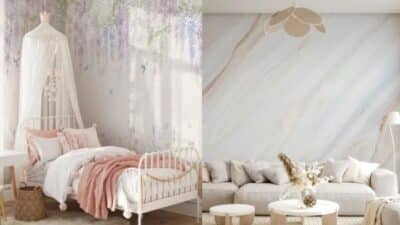Creating an aesthetic vision board is a simple and fun way to bring focus and inspiration to goals and dreams. It lets someone collect pictures, quotes, and colors they love and arrange them in a way that feels personal and motivating. An aesthetic vision board helps turn ideas into a clear visual plan, making it easier to stay motivated and see progress over time.
Many people enjoy making vision boards online because it’s quick and easy to add their own photos or choose from thousands of free images. This digital method also allows customizing the design with colors, fonts, and layouts to match personal style.
Whether for life goals, work projects, or just daily inspiration, an aesthetic vision board creates a space to visualize what matters most. It can be as simple or detailed as someone wants, giving them control over how they dream and plan.
Getting Inspired for Your Aesthetic Vision Board
Creating an aesthetic vision board starts with knowing what style fits best and choosing themes that reflect personal goals. It also helps to gather ideas from various sources to give the board both meaning and visual appeal.
Identifying Your Personal Style
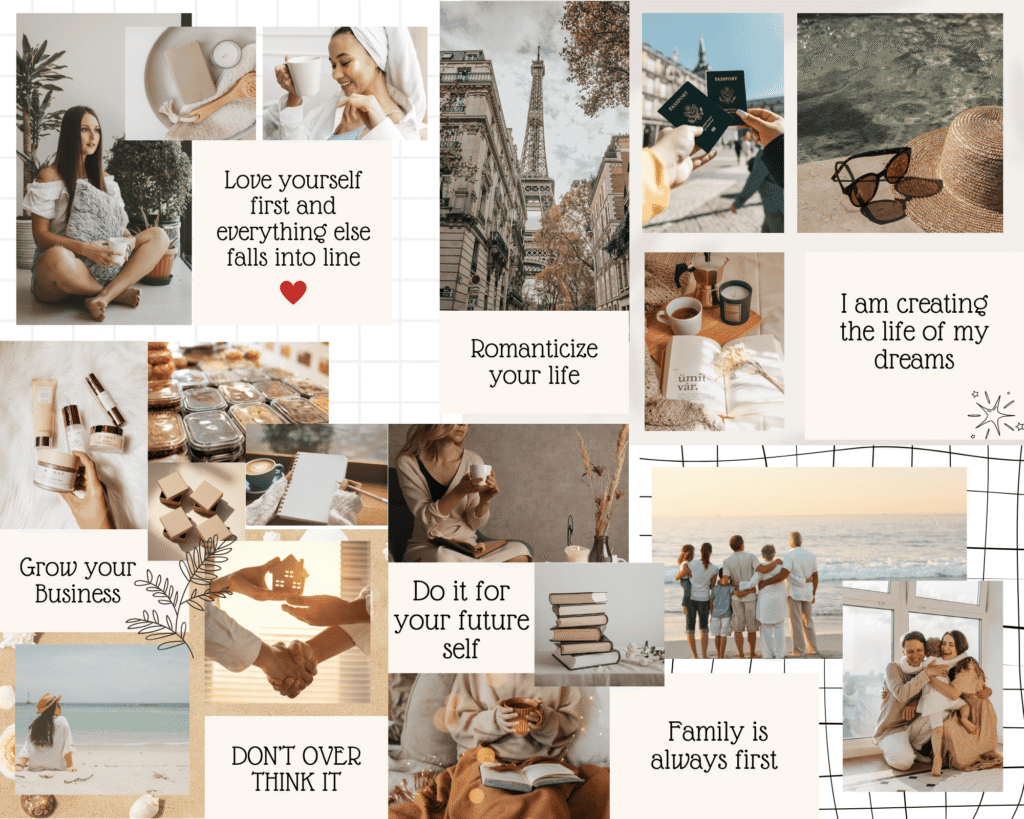
Understanding personal style guides the overall look of the vision board. It could be minimalist, colorful, vintage, or modern. She might look at clothes, home decor, or even her favorite art to get clues about her style.
A quick way to define this is by listing things she likes: colors, shapes, or textures. For example, if she loves soft pastels and clean lines, a calm and simple style works. This clarity helps pick images and fonts that feel right and stay consistent.
Exploring Aesthetic Themes
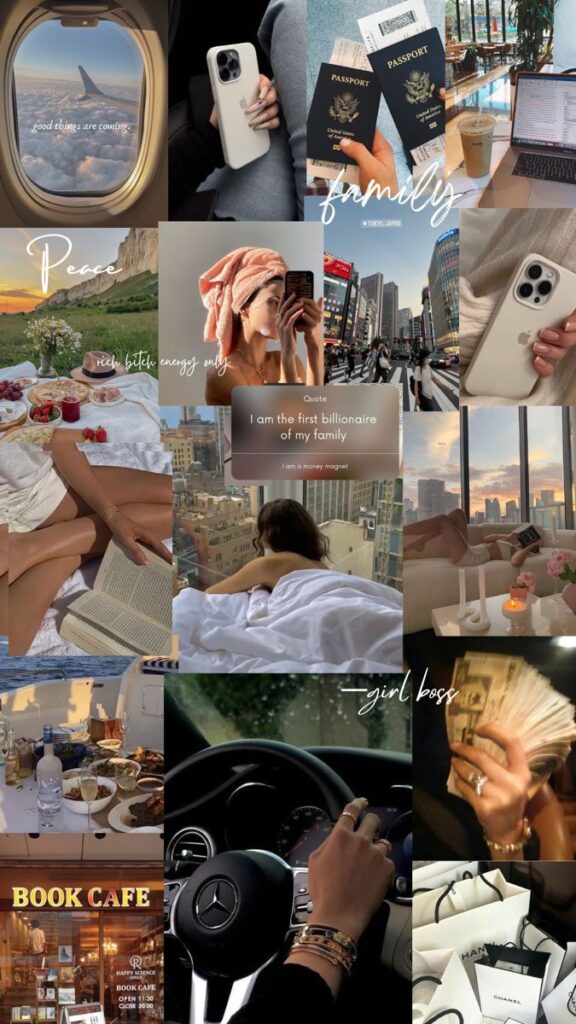

Choosing a theme ties the whole vision board together. It could be related to career goals, travel dreams, or wellness habits. Themes make it easier to focus on what’s important and keep the board organized.
Themes can be broad or narrow. She might pick “self-care” with images of nature and relaxing activities. Or choose “adventure” filled with maps and photos of cities. Writing down key words or phrases related to the theme can provide focus and inspiration.
Finding Inspiration Sources
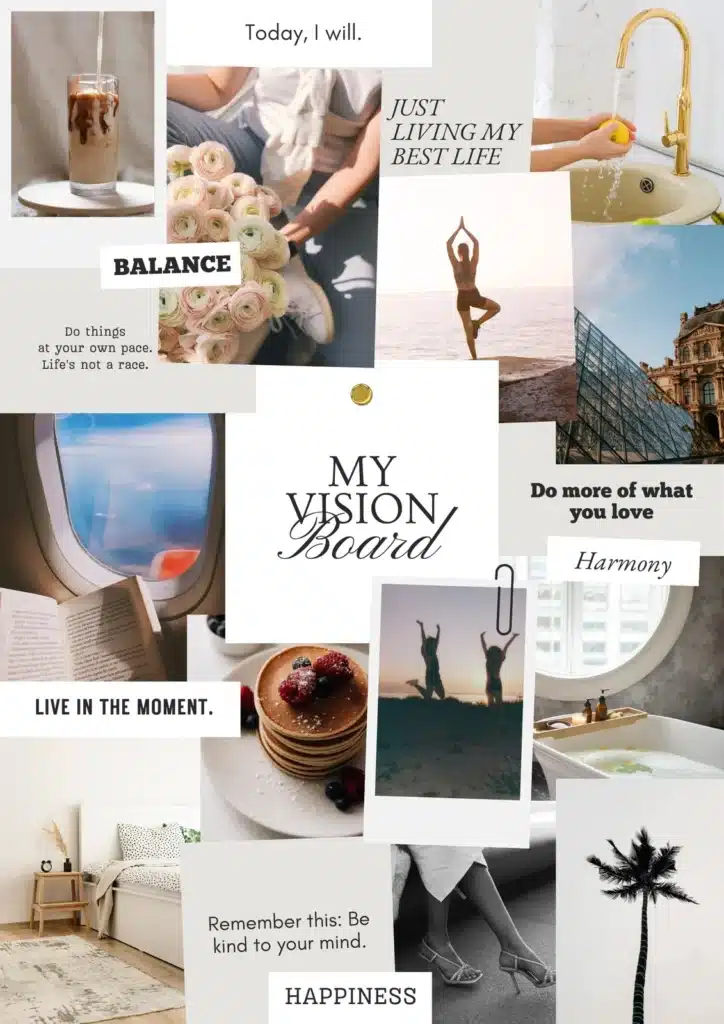
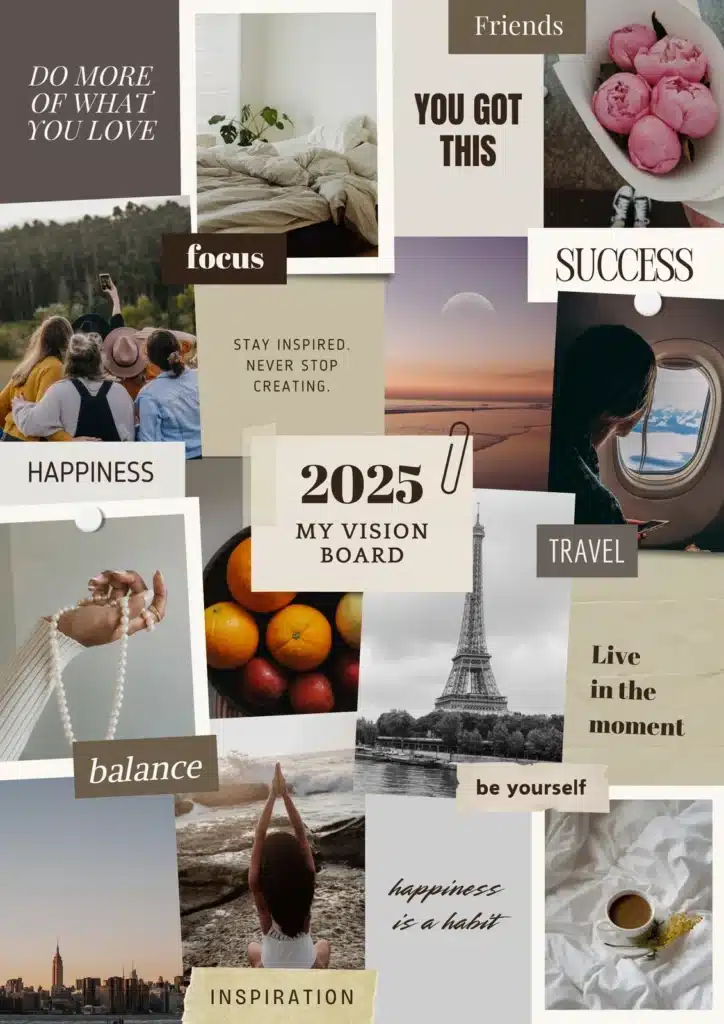
Finding the right pictures and quotes is key. She can use websites like Canva or Pinterest for free images and ideas. These platforms offer millions of photos to match different vibes and goals.
It helps to create folders or boards to save favorite images. This keeps everything in one place. She can also look at magazines, books, or her own photos to add personal meaning. Mixing sources makes the vision board unique and motivating.
Gathering and Curating Materials
To create an effective vision board, it’s important to pick the right visual pieces, quotes, and photos that truly connect to personal goals. Each element should reflect clear ideas and inspire motivation when seen.
Choosing Visual Elements
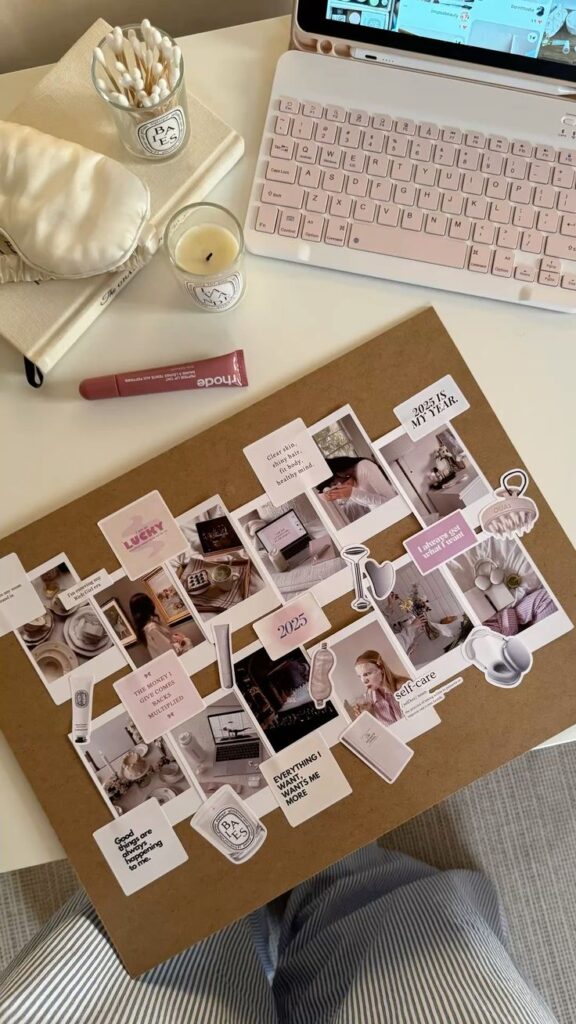
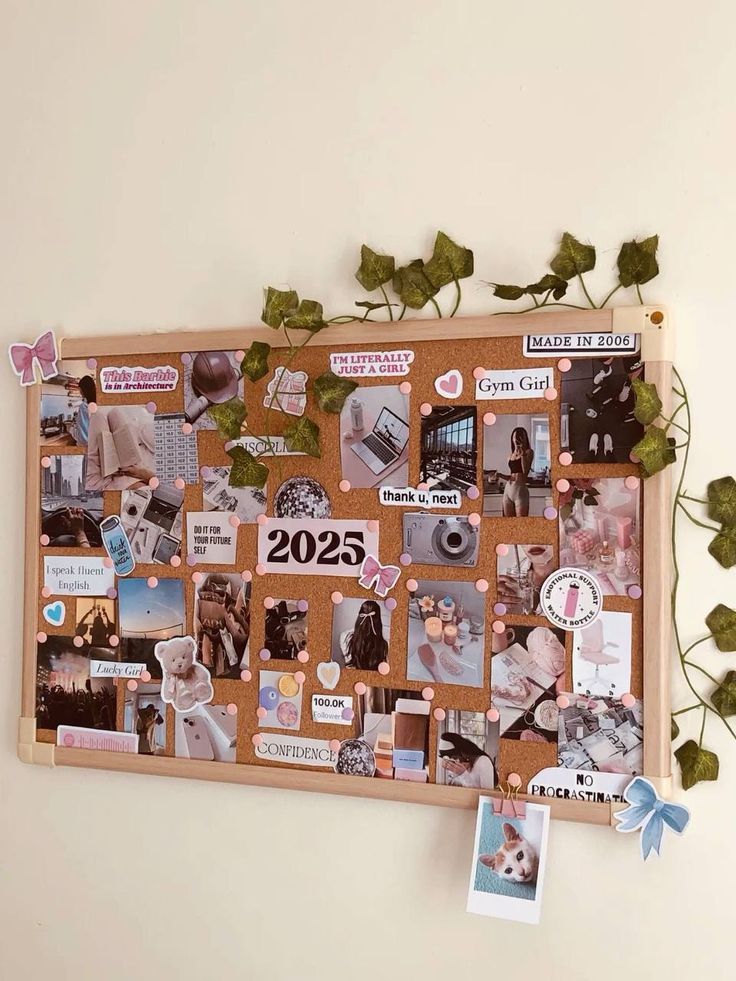
Visual elements set the mood and focus of a vision board. People should look for images, colors, and symbols that match their dreams and feelings. For example, calm blues might suit someone wanting peace, while bold reds could represent energy or passion.
Decorative items like stickers or small drawings can add personality. Using a mix of digital images and hand-drawn elements helps keep the board unique. Balance between busy and simple areas also helps the board look inviting without being overwhelming.
Selecting Meaningful Quotes
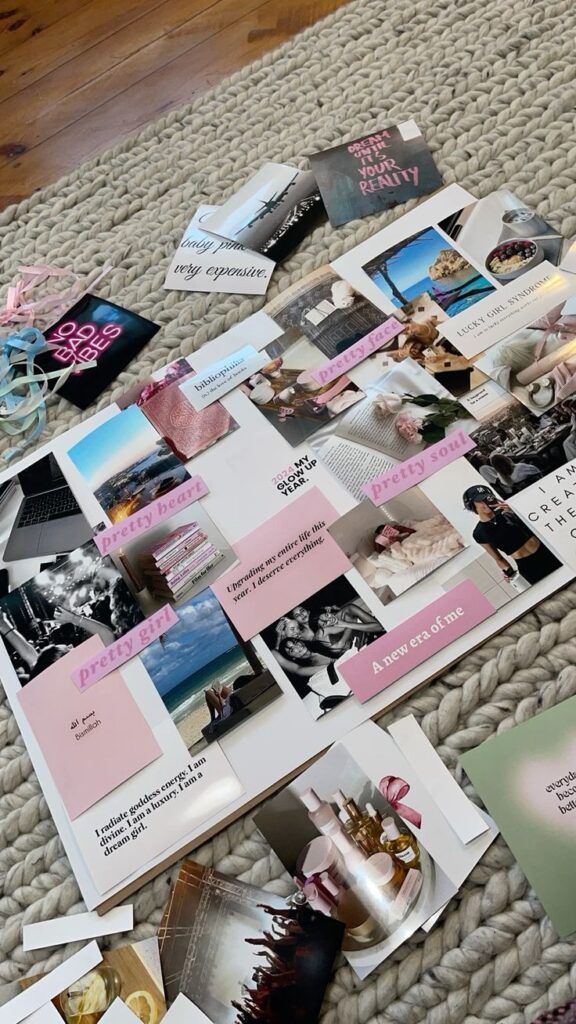
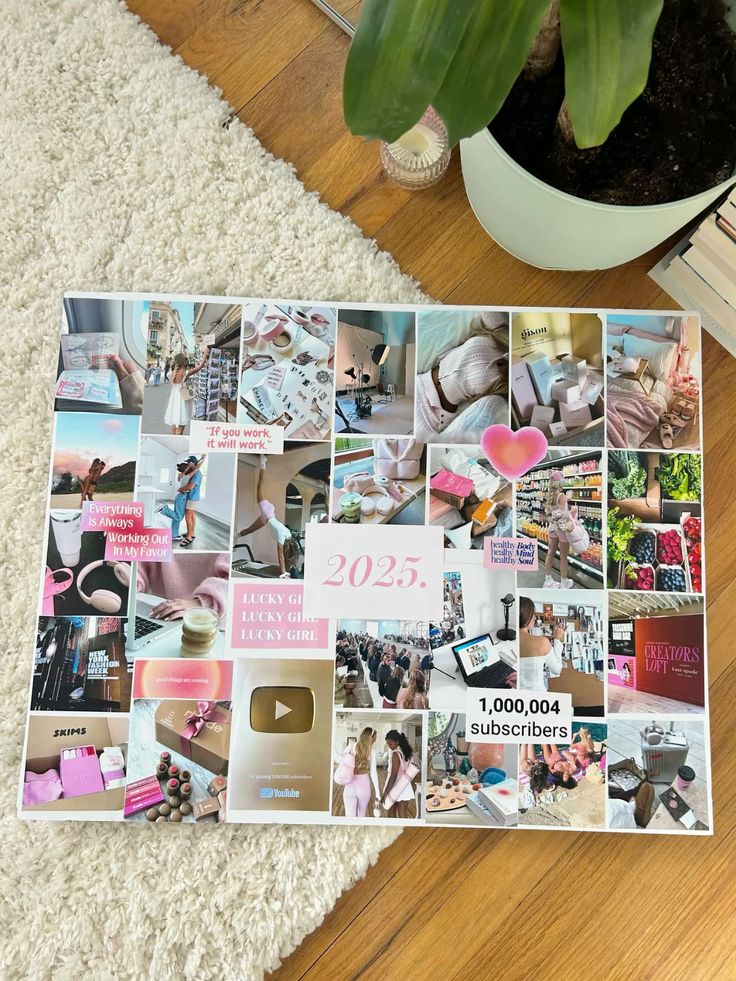
Quotes should be short and strong. They work best when they capture key beliefs or goals in just a sentence or two. Choosing quotes that are positive and forward-looking can boost daily motivation.
It helps to pick sayings that speak directly to what someone wants to achieve. For instance, for career growth, a quote about persistence fits well. Writing quotes by hand or finding stylish fonts online can make them stand out visually.
Collecting Photos and Textures
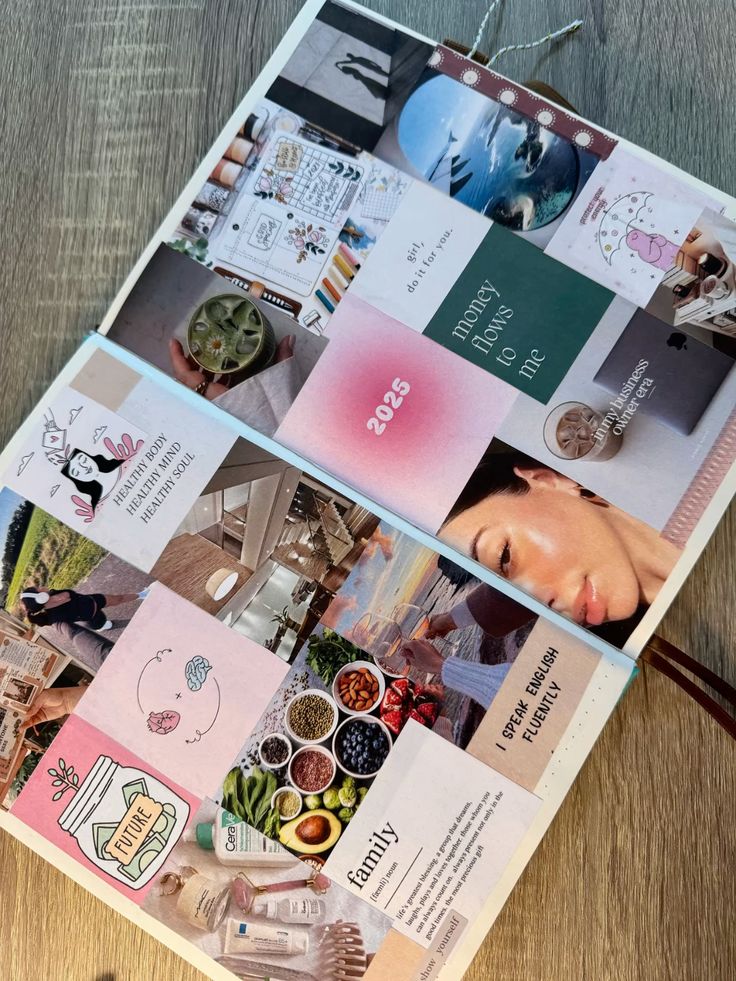
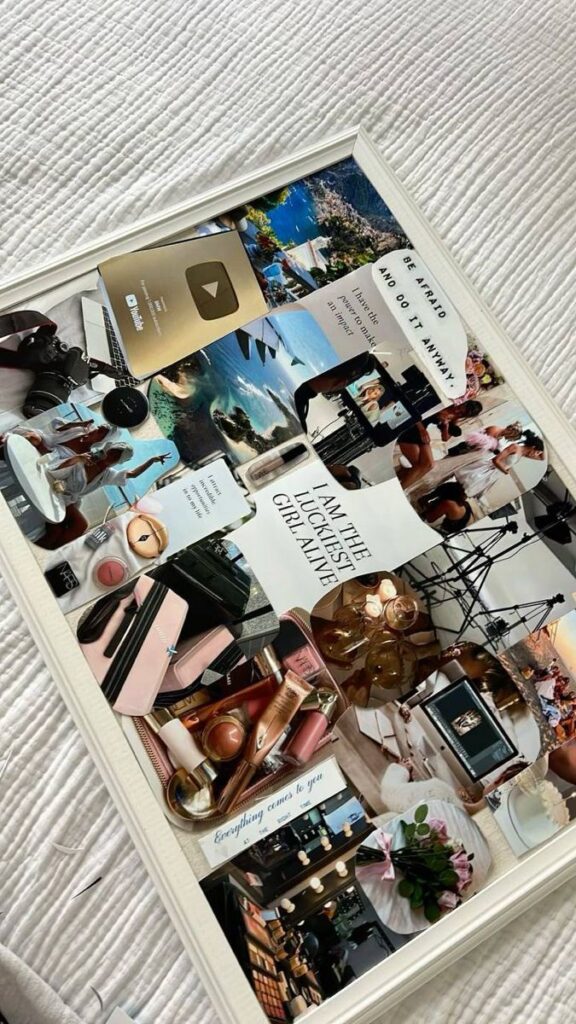
Photos add a real-life touch by showing goals as images. These can be pictures from trips, events, or places someone wants to visit. Using personal photos makes the vision board feel more connected and real.
Textures like fabric swatches or paper scraps add depth and can make a board feel more creative. Natural textures like leaves or sandpaper also work well for certain themes, like nature or adventure. Mixing smooth and rough textures brings visual interest and a tactile feel.
Designing and Assembling Your Vision Board
A clear plan helps when putting together a vision board. Choosing how things fit on the board, placing images and words in an eye-catching way, and adding unique details all matter. These steps guide the process smoothly.
Deciding on a Layout
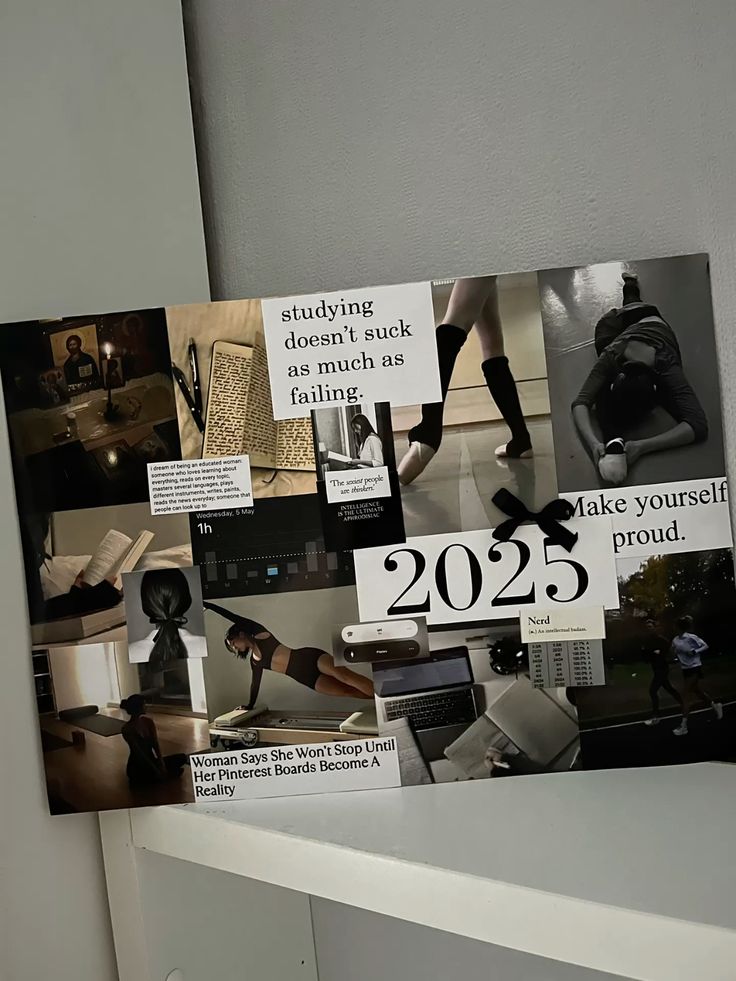
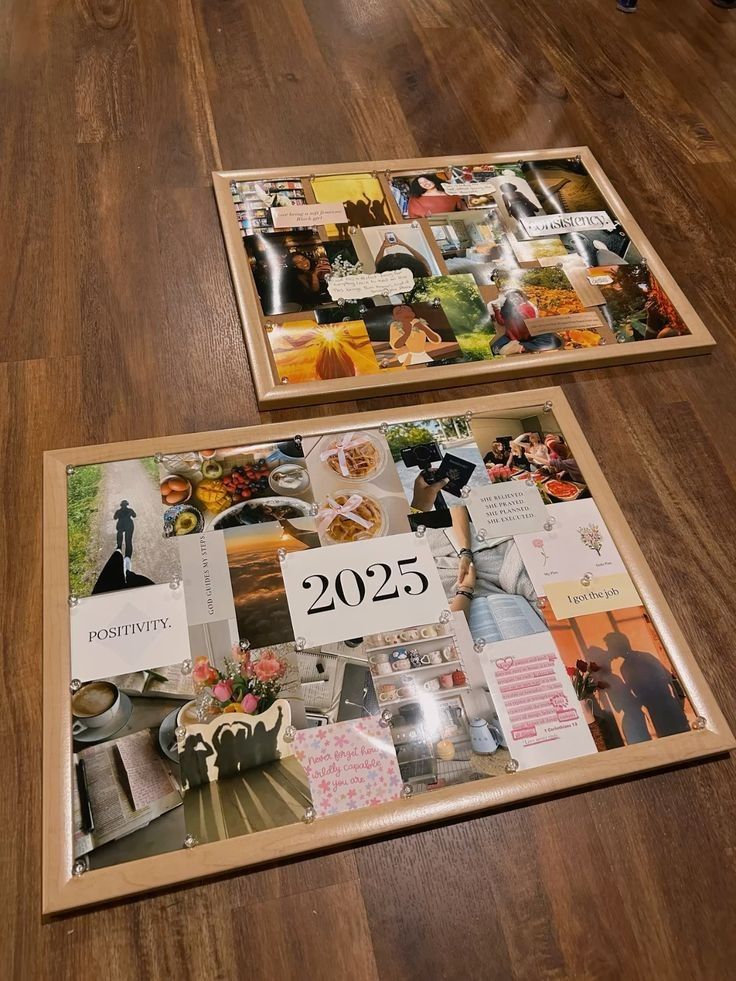
First, pick a board size and shape that fits where it will be displayed. It can be a corkboard, poster board, or digital canvas.
Next, decide if the layout will be neat and organized or more freeform and creative. A grid style helps keep things tidy and easy to read. A scattered approach can feel lively and artistic.
Planning sections before gluing or pinning helps keep the board balanced. Group similar goals and ideas together, like career, travel, or health.
Arranging Elements Creatively
Start by placing the biggest images or words first, as they catch the eye. Then, add smaller items around them.
Overlap photos and quotes slightly for depth and interest, but avoid cluttering. Leave some blank space so the board doesn’t feel overwhelming.
Mix different types of elements, like pictures, handwritten notes, and stickers. This variety makes the board visually fun and meaningful.
Adding Personal Touches
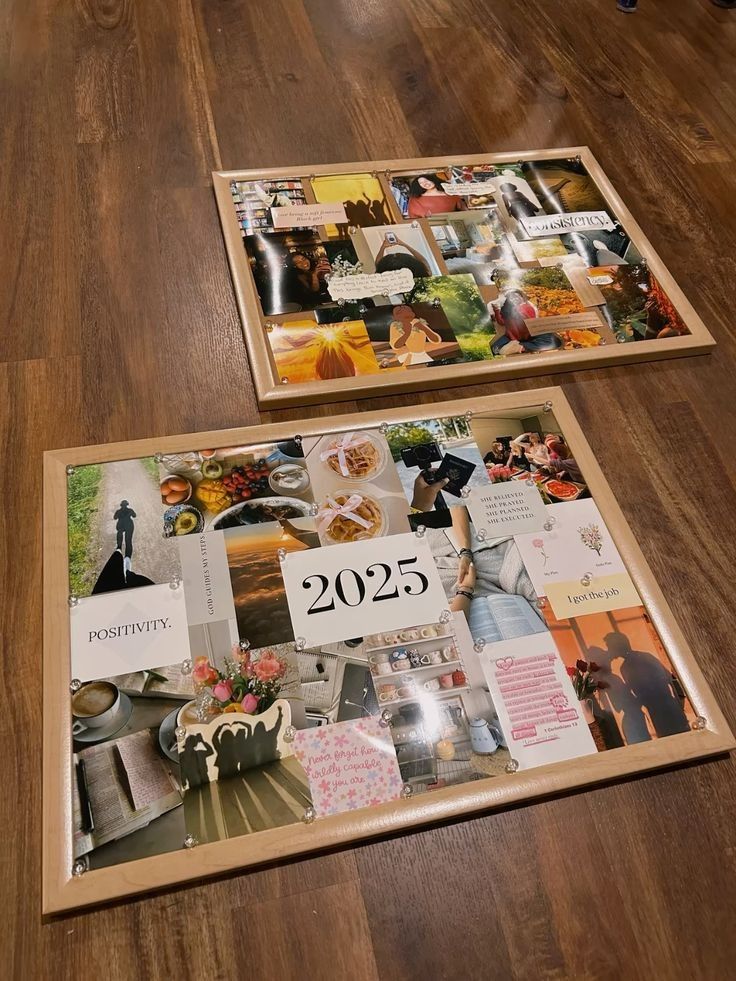
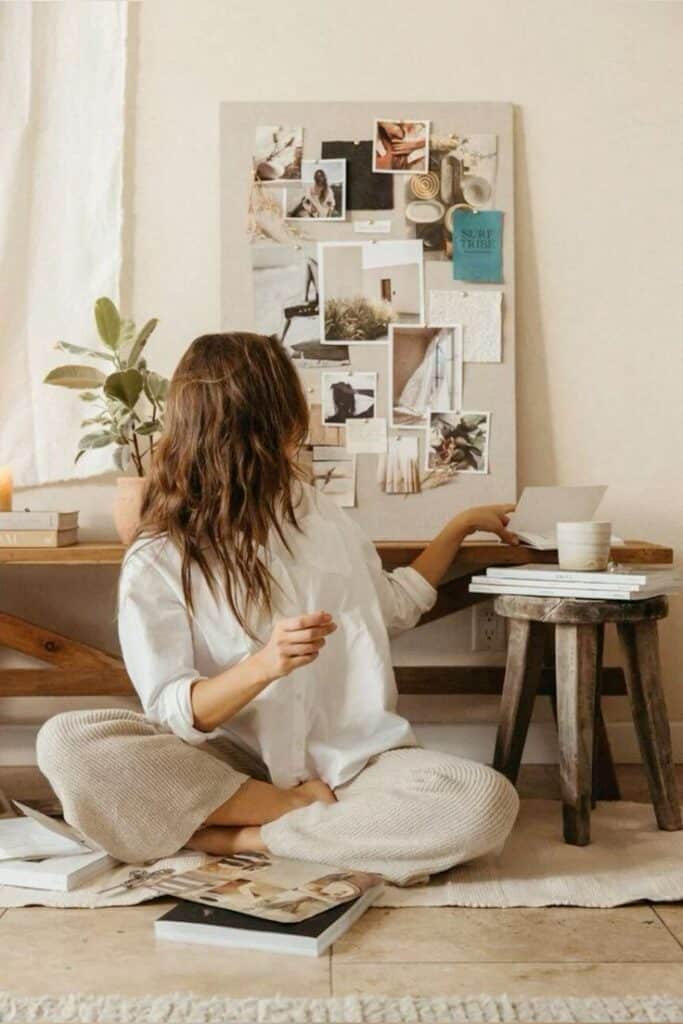
Use colors that inspire the person making the board. They can paint the background or add colored paper to highlight key areas.
Handwriting quotes or goals adds a personal feel. Small objects like fabric swatches, dried flowers, or buttons can show personality too.
Regularly changing or adding to the board keeps it fresh. This helps keep motivation alive as goals change or grow over time.
Displaying and Using Your Vision Board
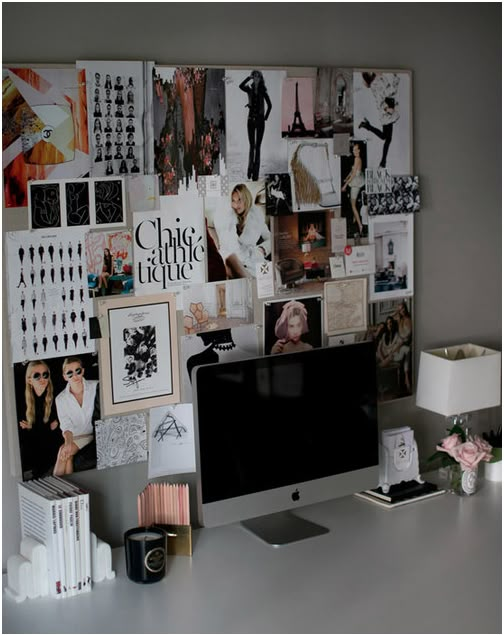
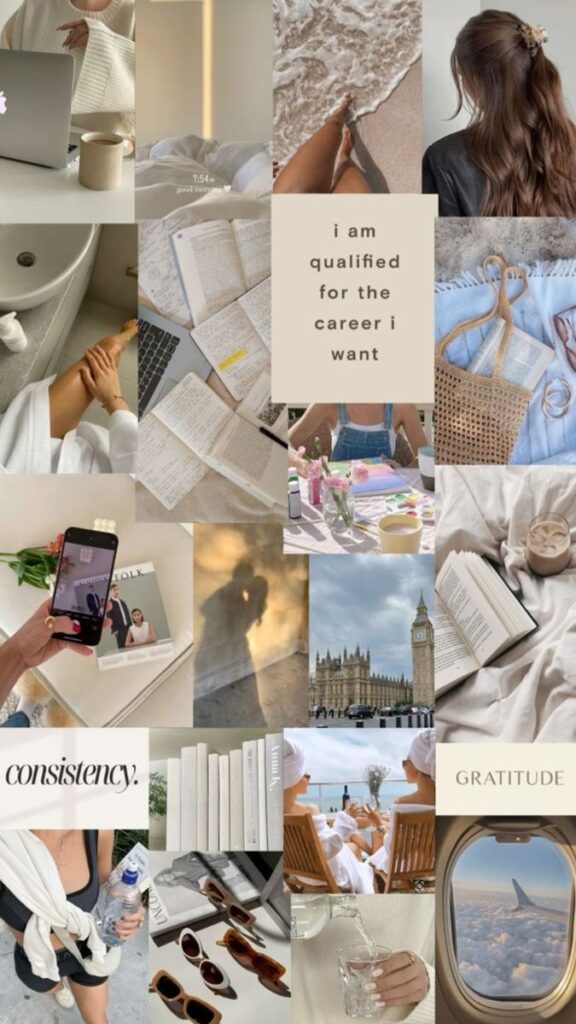
Once the vision board is complete, it should be placed where it can be seen often. Common spots include bedrooms, offices, or near a workspace. This helps keep the goals and dreams in focus every day.
The person can spend a few minutes each day looking at the board. This practice helps remind them of what they want to achieve. It can also boost motivation and keep their focus clear.
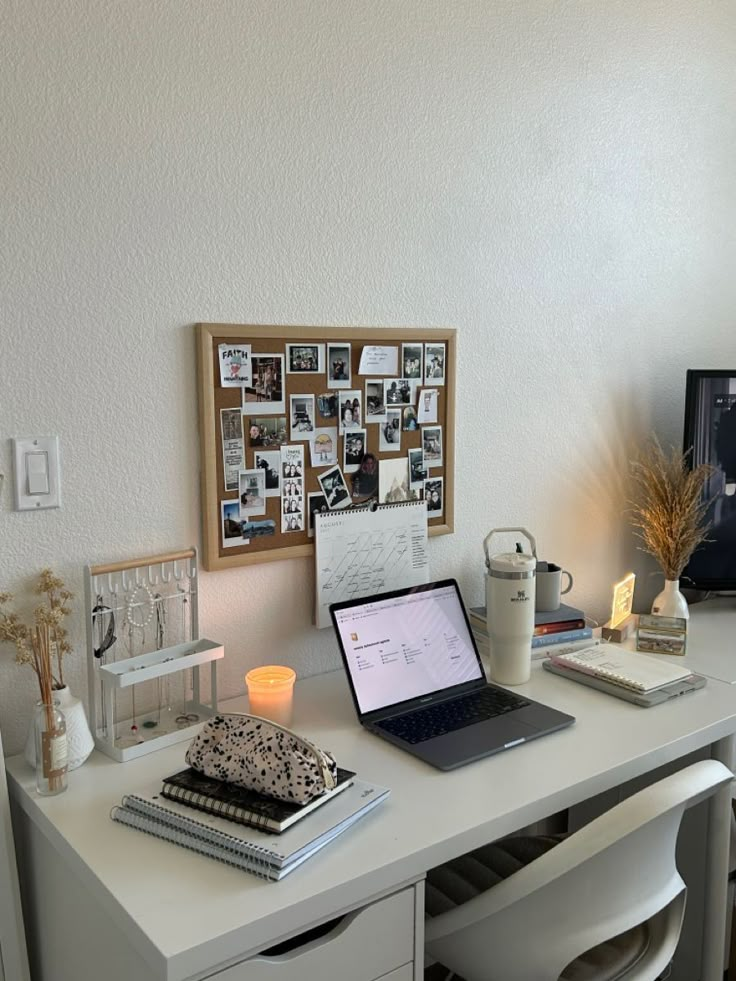
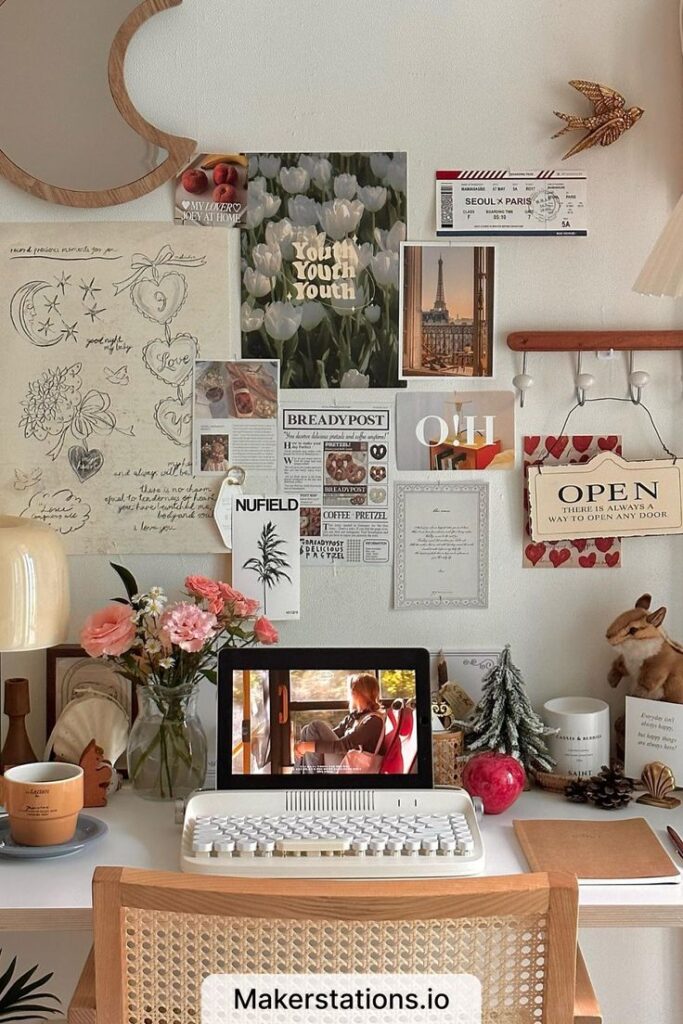
Using the vision board actively means they can update it as goals change or new ideas come up. Replacing old images or adding new ones helps keep the board fresh and relevant.
Here are some simple tips for using the vision board effectively:
- Look at the board each morning.
- Visualize reaching the goals.
- Take small steps toward the goals daily.
- Celebrate progress, no matter how small.
By regularly interacting with the vision board, it becomes more than just decoration. It acts as a tool for personal growth and planning.
The key is to treat the vision board as a friendly reminder, not as a strict rule. This way, it stays positive and helpful without causing stress.
- 0shares
- Facebook0
- Pinterest0
- Twitter0


